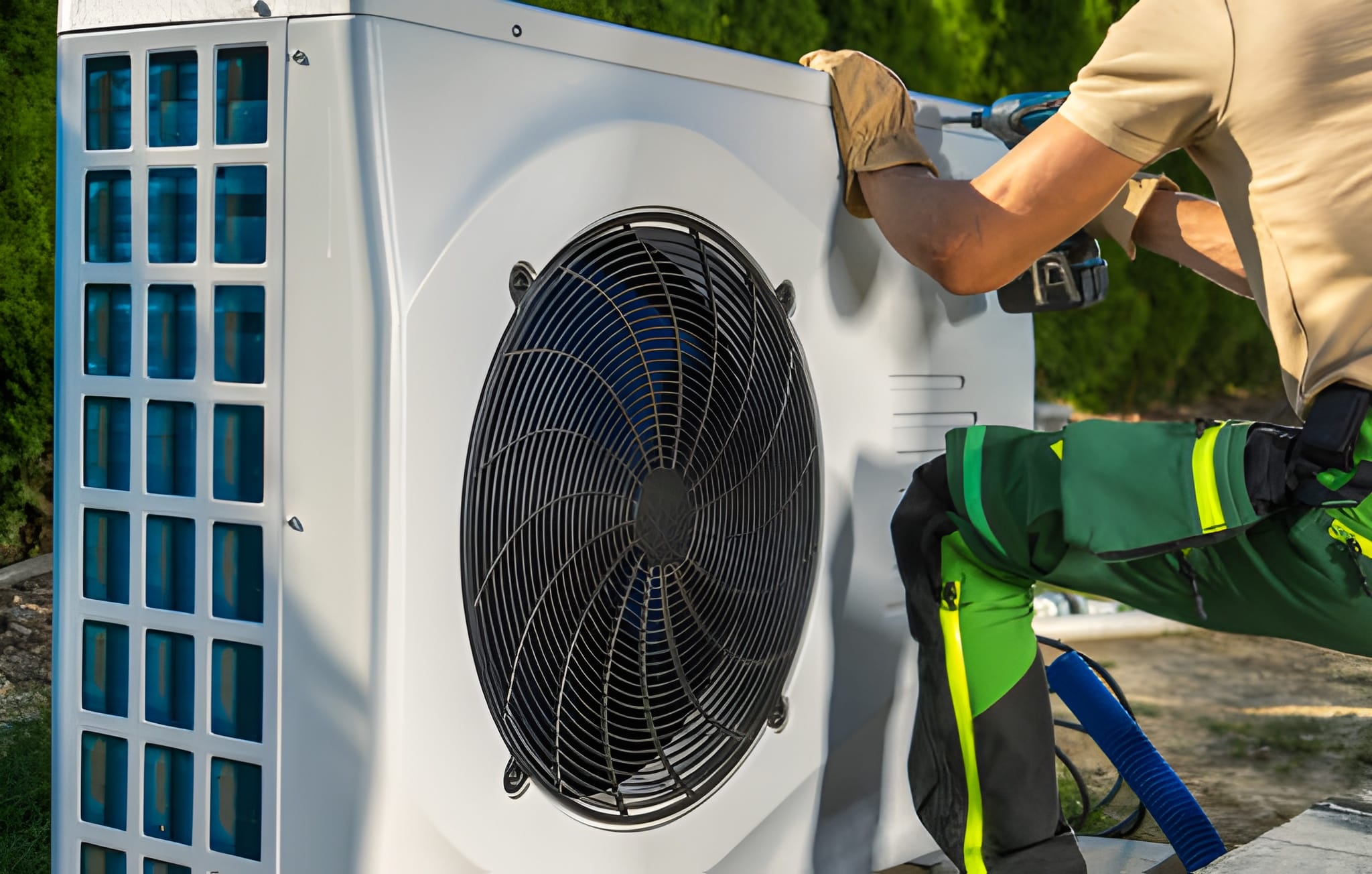Heat Pump Repair in Mill Creek, WA
Heat Pump Repair in Mill Creek, WA
When your heat pump struggles to heat or cool reliably, it affects comfort, energy bills, and peace of mind. Heat pump repair in Mill Creek, WA focuses on diagnosing and fixing the most common mechanical, refrigerant, and electrical problems so your system runs safely and efficiently through Snohomish County’s cool, damp winters and mild summers.
Common heat pump problems in Mill Creek homes
Mill Creek’s climate — frequent overcast, occasional cold snaps, and humid seasons — places particular demands on heat pumps. The most common issues technicians find include:
- Refrigerant leaks or low charge — reduced heating capacity, ice on the outdoor coil, or short cycling.
- Compressor failures — noisy startup, tripping breakers, or no cooling/heating output.
- Fan motor or blower problems — weak airflow, unusual noises, or overheating.
- Electrical faults — tripped breakers, failed capacitors, faulty contactors, or wiring degradation due to moisture exposure.
- Thermostat and control errors — inaccurate temperature readings or communication faults with variable-speed systems.
- Defrost cycle and reversing valve issues — frost buildup on outdoor units and reduced winter performance.
- Drainage and condensate problems — clogged drain lines leading to water damage or indoor humidity issues.
On-site diagnostic and troubleshooting process
A thorough diagnostic separates quick fixes from deeper repairs. Typical on-site workflow:
- Visual inspection of outdoor and indoor units for physical damage, corrosion, or debris from local trees and pollen.
- System startup and symptom replication to observe noises, cycling behavior, airflow, and thermostat responses.
- Electrical testing including voltage, amp draw, capacitor condition, and safety controls to identify shorts or failing components.
- Refrigerant evaluation using gauges and leak-detection methods to confirm pressure, charge level, and potential leak points.
- Component checks for compressor health, reversing valve function, and blower motor operation.
- Diagnostics report summarizing findings, repair options, expected timelines, warranty implications, and energy performance impact.
Technicians adapt the approach for common Mill Creek conditions — for example, checking for moisture-related corrosion on outdoor connections and verifying defrost performance during colder, damp periods.
Repair options and typical timelines
Repairs are scoped based on diagnostic results and homeowner priorities (cost, longevity, efficiency). Typical options:
- Minor on-the-spot repairs: Replacing capacitors, contactors, or replacing clogged filters and clearing drain lines. These are often completed the same day.
- Moderate repairs: Fixing refrigerant leaks, recharging with appropriate refrigerant, or replacing compressors or fan motors. These require parts and may take one to several days.
- Major repairs or retrofit: Replacing major components or upgrading control boards and communicating systems. Timelines vary from a few days to a week depending on parts availability.
Emergency response is available for no-heat or safety-related failures, especially during cold snaps when heat pumps are critical for comfort and preventing pipe freeze risk.
How costs and warranty affect repair decisions
Repair costs depend on system age, component availability, refrigerant type, labor complexity, and whether parts are covered under warranty. Important factors to consider:
- Systems still under manufacturer warranty may have parts coverage that reduces out-of-pocket expense; always check the model and serial number before major work.
- Workmanship warranties from the service provider typically cover labor for a specified period after repair.
- Older systems may use phased-out refrigerants that are more costly or restricted to service; this impacts repair feasibility and long-term operating cost.
Rather than specific price figures, assess whether the repair keeps your system reliable for an acceptable period relative to the cost and remaining useful life.
Repair versus replacement: clear criteria for Mill Creek homeowners
When deciding between repairing a heat pump and replacing it, weigh these practical criteria:
- Age of the system: Heat pumps nearing the end of their expected service life are likely better candidates for replacement, particularly if multiple major components are failing.
- Frequency and cost of repairs: If you face repeated failures within a short span, cumulative repair costs often exceed the value of a new, more efficient unit.
- Energy efficiency goals: Newer heat pumps offer substantial efficiency improvements and better cold-climate performance, which can reduce monthly energy use in Mill Creek’s cooler months.
- Refrigerant considerations: If your system requires a refrigerant that is being phased out, future service costs will rise and replacement may be more practical.
- Comfort and performance needs: If your home requires quieter operation, better humidity control, or advanced zoning, replacement with a modern system may deliver the outcomes you want.
A technician should provide a side-by-side comparison showing estimated remaining life after repair, performance expectations, and long-term operating cost differences.
Warranty and post-repair protection
Understand both manufacturer and workmanship warranty elements:
- Manufacturer parts warranty (check your original install paperwork or model information) may cover major components for a set period.
- Workmanship or labor warranty from your service provider typically covers the repair work for a defined timeframe; get the exact terms in writing.
- Keep records of all repairs and parts replaced to preserve warranty claims and for future resale value.
Maintenance to reduce future repairs
Preventive maintenance reduces emergency calls and extends heat pump life in Mill Creek’s mixed climate:
- Schedule regular seasonal tune-ups, ideally before winter and summer peaks.
- Replace or clean filters and ensure clear airflow around indoor and outdoor units.
- Keep outdoor coils and condensate drains clear of leaves, pollen, and debris common to local yards.
- Monitor system performance and unusual noises so minor issues can be fixed before they cause major failures.
When your heat pump isn't performing, a clear diagnostic and a transparent explanation of repair options help you decide the best course for comfort, reliability, and long-term cost. Expert technicians familiar with Mill Creek conditions can identify root causes quickly, explain warranty impacts, and provide honest guidance on repair versus replacement based on system age, refrigerant type, and performance needs.

Customer Testimonials
Service Areas


